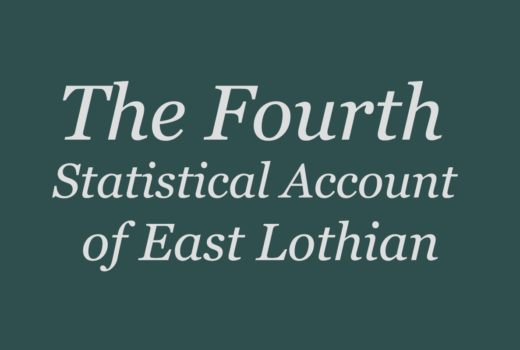Parish Representative & Parish Editor:
Diana Hardy
Introduction
Spott parish – a mix of farm and hill land – covers some 2249ha (5557 acres). The one settlement, Spott village, is small and built to a linear plan; it lies between the coastal plain at Dunbar and the Lammermuir Hills. The approach road from the east crosses a narrow bridge, the Canongate, and rises steeply to the focal point of the village, the church and the community hall (which was previously the school). On the other side of the road lies the entrance to Spott House and estate. After this the village proper stretches for about half a mile along the road westwards toward Stenton. In the centre of the village, there is a road junction leading south to the Lammermuirs. The village lies on the narrow shelf between the Lammermuir escarpment and the Spott Burn. Northwest of Spott village is the fertile plateau land, which runs into the Dunbar plain. This area ranges in height from 25m above sea level near the A1 road to 90m above sea level near Pleasants farm. This is the area of old red sandstones, the youngest rocks in the parish, giving the fields their distinctive colour.
In 1945 Spott was a farming community with a population of around 300. Farms were owned by large estates and rented out. They were the major employers in the parish and as mechanisation was in its infancy, a large number of workers were still required. There was also some work to be had in the smithy, sawmill and shop in the village. Families moved from farm to farm but usually stayed within the local area. Rationing had minimal effect, as the rural economy was largely self-sufficient. There was no electricity but most houses had running water and an inside toilet. Entertainments were largely held within the village with dances held in the village hut, as well as indoor bowling, darts, dominoes, meetings and social events. Cars were not to arrive in the village for several years, so people walked or cycled to the cinema or to the pubs in Dunbar or to attend dances in neighbouring villages. Medical care was provided by the doctors and the district nurses from Dunbar; couples were married in the parish church or by the minister in the manse and their children attended Spott Primary School and then Dunbar Secondary School. Parishioners knew each other and cared for each other.
In 2000, there has been little or no change in land use in the parish. It remains as farmland apart from the village itself. Two of the farm steadings in the parish, Pleasants and Pathhead, are almost totally unchanged, but most have been altered to accommodate modern farm machinery; a few have been converted to housing (see Homes). Similarly, the appearance of the village is little changed.
